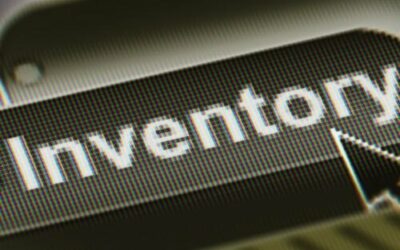Your fixed asset register is there to help you have full control over all of your assets. This can be easier said than done if your asset register is a spreadsheet. With the latest software, you can have reliable data that allows you to do more. You could, for example, allow the data to offer you better contingency planning and risk management.
Let’s take a look at just how your asset register allows this.
What Exactly Is Contingency Planning?
A contingency plan is a special type of plan that involves keeping your business running. It does this by ensuring there’s a backup for your teams, and/or your entire business. A result of this plan means that you’ll know exactly what to do in the event of an emergency. As such, a contingency plan is very important.
If you didn’t have a contingency plan and your system went down for 6 hours, what would you do? If a very important client chose to pull out of a project at the last minute, what would your next move be?

Contingency planning and your asset register
Your contingency plan can be kept safe thanks to the use of a fixed asset register. This is simply because the register would give you easy access to the plan. In addition to this, it will make sure your plan is always available.
Did you know that every contingency plan has 5 steps? These are:
- Programme management – This step involves you ensuring that at least 1 team member from every department represents their department. Your plan will mention who this is and what objectives they need to fulfil.
- Planning – Risk assessments need to be carried out so you know the impact on your business.
- Implementation – The third step involves you noting down every single aspect of your plan. You need to include which departments will be most affected and why. Lastly, it’s vital that you include the action that affected team members need to take. These actions can be listed in your fixed asset register for ease of access.
- Testing and exercise – Let’s imagine that your building has lost power. What do you plan to do should this event arise? Test your contingency plan and see what happens. Perhaps you’ll need a backup electricity supply. Just make sure that you have what you need to get through the exercises/tests so you know all will be well should the power go out. Don’t worry, the details of your tests and exercises can be added to your asset register. This could ensure you know what to do if and when the power goes out for real.
- Programme improvement – How can you make your contingency plan better? How can you improve it? Will you need more generators, more tools? Or more team members to help you. Think about how you can make the ideal outcome last for as long as possible. If you can improve the outcome your business could be better for it.
What Is Risk Management?
Risk management is all about searching for risks and identifying and treating them. These risks could include security issues, loss of machinery, theft, floods, and so on. Ideally, you will be prepared for any of the above and more. Your fixed asset register could be useful here as it can show you exactly when you need to use your contingency plan. All that you have to do is carry out a risk assessment and work out the details. These details can then be uploaded to your asset register so they can be accessed easily.
Risk management and your asset register
Risk management is made up of 5 techniques, these are:
- Avoidance – This step is all about potentially avoiding risks. For example, you would not send your vans out on the road if the roads were flooded. You would not store your tools in your warehouse without keeping them secure. Take a look at what you can do to avoid risks in the workplace and note them in your fixed asset register.
- Retention – On some occasions, accepting that a risk could occur may be the ideal option. For example, putting up with a gate being covered in graffiti and vandalised could be less expensive than claiming on your insurance.
- Spreading – This involves spreading the risk around. For example, you could make 4-5 copies of important documents and keep them in numerous locations.
- Loss prevention and reduction – Using devices such as security cameras could help to reduce theft. Making sure you have the right type of insurance can also help.
- Transfer – Lastly, there may be a chance to transfer the risk to another business. You could, for example, allow a company to hold a work event in your function suite. The company will have to show that they’ve included your function suite in their insurance policy. If something goes wrong the company can make the claim rather than you.
Using a fixed asset register alongside your contingency plan and risk assessment strategy can give you peace of mind. It’s no wonder then, that more and more people are using an asset register in this way.
Would you like to chat with a fixed asset register expert and contingency planning and risk management? Contact us today at team@itemit.com.
The Best Contingency Planning And Risk Management Tool
Choose a better way to track your assets
Start your free 14-day trial now
Instant access. No credit card details required.
Related articles
The Impact Of IoT On Asset Tracking And Management
How does IoT revolutionise asset tracking and management? Discover the latest in IoT asset tracking and its transformative impact—read the article now!
IT Inventory Management: A Short Guide
What is IT inventory management and how can it make your working life easier? Read this short guide now to discover what it is and why you need it!
Optimising Healthcare Supply Chain Management
Discover best practices to enhance healthcare supply chain management, improve efficiency, and overcome common challenges. Learn effective optimization strategies..


